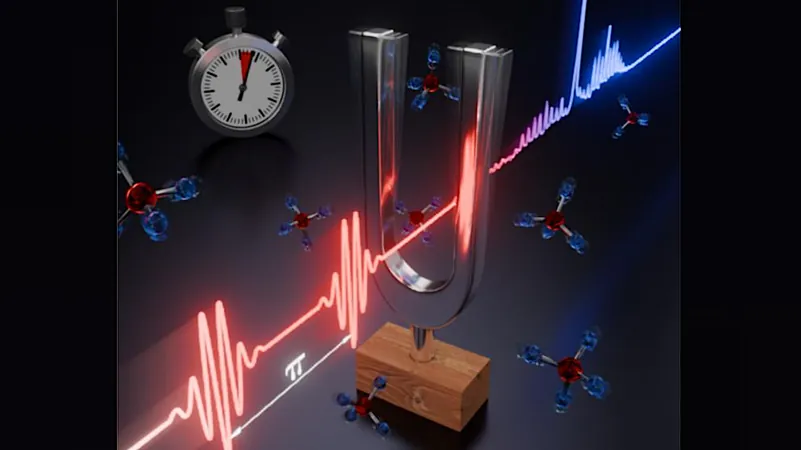
Revolutionary Gas Detection Method Set to Transform Environmental Monitoring and Astrobiology Missions!
2025-01-10
Author: Amelia
In the quest to explore other worlds, scientists face immense challenges, especially when it comes to collecting and analyzing samples from distant environments. A new technology developed by researchers at the University of Stuttgart may prove to be a game-changer for both Earth-based applications and future astrobiology missions. This innovative approach melds traditional spectroscopy with cutting-edge coherent control techniques, allowing for rapid detection of low gas concentrations in real-time.
Breakthrough in Detection Speed
Typically, gas detection can be a time-consuming affair, often taking as long as 30 minutes to capture a full spectrum of a gas like methane. However, this new method allows researchers to complete the same task in a mere three seconds! Such efficiency is crucial for applications ranging from environmental monitoring—especially in tracking greenhouse gases that contribute significantly to climate change—to rapidly identifying toxic gas leaks in industrial settings.
Simon Angstenberger, the lead researcher, emphasized the importance of this flexibility in gas detection: "Most gases are present in small amounts, so detecting them is pivotal across various industries." This versatility truly reflects the technological leap the team has made.
Harnessing the Power of Lasers
So, how does it work? The foundation of this advanced detection method lies in its unique use of lasers paired with quartz-enhanced photoacoustic spectroscopy (QEPAS). The process involves modulating laser output to create rapid pulses that interact with gas molecules, generating vibrational signals that can be captured and analyzed.
What sets this method apart is the innovative use of coherent control, which optimally times these laser pulses to synchronize with the gas molecules’ reactions. As a result, scientists can measure gas "fingerprints" accurately—even in trace amounts—allowing for real-time monitoring of a broad range of gases over an extensive wavelength range.
A New Era for Environmental Monitoring and Beyond
This influx of information from low gas concentrations can revolutionize various sectors. For instance, detecting methane, a powerful greenhouse gas, plays a pivotal role in climate monitoring, giving environmental scientists crucial data to combat climate change and adjust strategies accordingly. Furthermore, health applications such as early cancer detection through breath analysis could also leverage this groundbreaking detection technology.
The researchers are not stopping with this milestone; they plan to test the limits of their method to determine the maximum speed and lowest concentrations that can be effectively measured. Additionally, there's an exciting goal to detect multiple gases simultaneously, pushing the boundaries of what's possible in gas detection.
Conclusion: A Vital Step Towards Exploration
In summary, the advances in gas detection technology developed at the University of Stuttgart not only promise enhanced environmental monitoring but could also be instrumental in future expeditions to worlds beyond our own. As humanity looks to the stars, tools that allow for swift and precise in situ analysis will be essential to unravel the mysteries of alien worlds. Could this technology one day help us find signs of extraterrestrial life? Only time—and rigorous testing—will tell.









 Brasil (PT)
Brasil (PT)
 Canada (EN)
Canada (EN)
 Chile (ES)
Chile (ES)
 Česko (CS)
Česko (CS)
 대한민국 (KO)
대한민국 (KO)
 España (ES)
España (ES)
 France (FR)
France (FR)
 Hong Kong (EN)
Hong Kong (EN)
 Italia (IT)
Italia (IT)
 日本 (JA)
日本 (JA)
 Magyarország (HU)
Magyarország (HU)
 Norge (NO)
Norge (NO)
 Polska (PL)
Polska (PL)
 Schweiz (DE)
Schweiz (DE)
 Singapore (EN)
Singapore (EN)
 Sverige (SV)
Sverige (SV)
 Suomi (FI)
Suomi (FI)
 Türkiye (TR)
Türkiye (TR)
 الإمارات العربية المتحدة (AR)
الإمارات العربية المتحدة (AR)